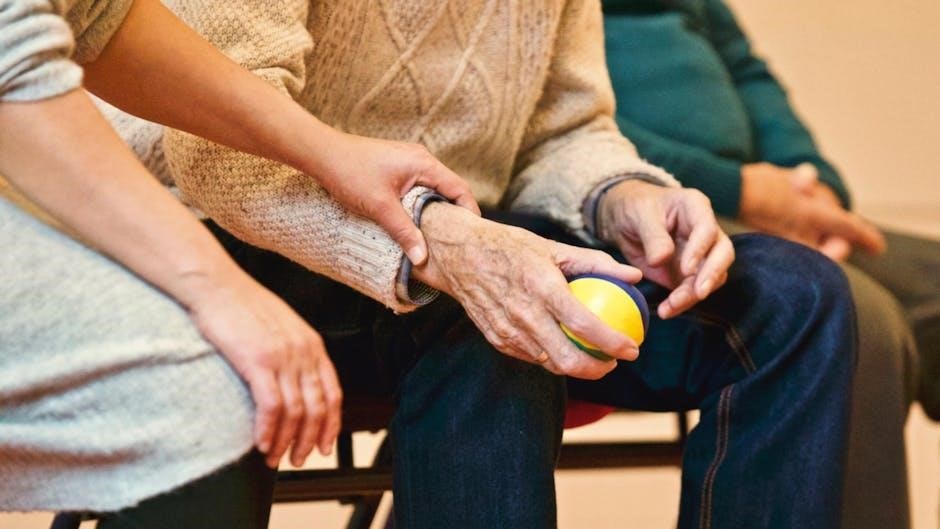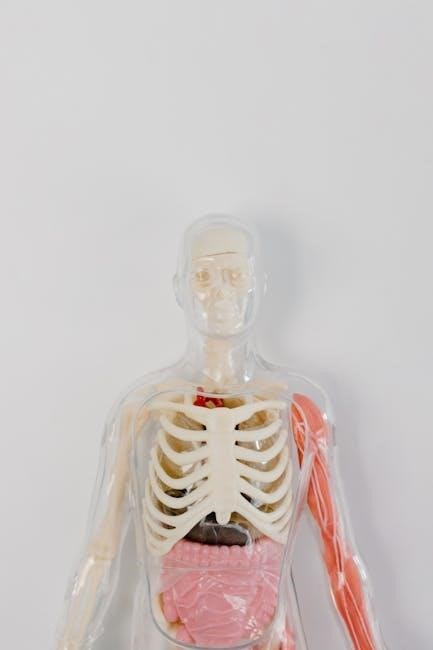The nursing curriculum serves as a comprehensive framework designed to equip students with essential knowledge, skills, and competencies for professional nursing practice, blending foundational sciences, clinical training, and evidence-based practices to address healthcare demands and professional standards effectively.
1.1 Overview of Nursing Education
Nursing education provides a structured pathway for students to acquire the knowledge, skills, and competencies necessary for effective patient care. It combines theoretical learning with hands-on clinical training, ensuring graduates are well-prepared to meet the demands of healthcare. The curriculum is designed to foster critical thinking, ethical decision-making, and compassionate care. Nursing education emphasizes evidence-based practices, cultural competence, and adaptability to evolving healthcare needs. It also focuses on developing leadership and communication skills, essential for interdisciplinary collaboration. The ultimate goal is to produce practice-ready nurses who can deliver high-quality, patient-centered care in diverse healthcare settings. Continuous updates in the curriculum ensure alignment with current industry standards and emerging trends in healthcare delivery.
1.2 Importance of a Structured Curriculum
A structured nursing curriculum ensures consistency and alignment with professional standards, producing competent nurses ready for practice. It provides a clear framework for acquiring essential knowledge, clinical skills, and ethical decision-making abilities. A well-defined curriculum guarantees that graduates meet licensing requirements and are prepared for exams like the NCLEX. It also fosters critical thinking, communication, and leadership skills, enabling nurses to adapt to diverse healthcare environments. A structured approach ensures that educational goals are met, and students are equipped to address patient needs effectively. Regular updates to the curriculum keep it relevant to evolving healthcare trends, ensuring nurses are practice-ready and capable of delivering high-quality care. This systematic approach is vital for producing confident, skilled professionals who can thrive in the nursing field.
Key Components of a Nursing Curriculum
The nursing curriculum includes foundational sciences, clinical training, and evidence-based practices, ensuring students develop the knowledge, skills, and competencies needed for effective patient care and professional success.
2.1 Foundational Sciences (Anatomy, Physiology, etc.)
The foundational sciences, including anatomy, physiology, and pharmacology, form the cornerstone of nursing education. These subjects provide students with a deep understanding of the human body’s structure, functions, and biological processes. Anatomy teaches the physical organization of the body, while physiology explores how systems function and interact. These sciences are essential for understanding health, disease mechanisms, and the rationale behind treatments. By mastering these concepts, nursing students develop the ability to assess patients accurately and make informed clinical decisions. Integration of these sciences into the curriculum ensures a strong foundation for advanced clinical training and evidence-based practice, enabling nurses to deliver safe and effective care.
2.2 Clinical Skills and Training
Clinical skills and training are integral components of a nursing curriculum, focusing on the practical application of knowledge in real-world healthcare settings. Simulation-based learning, hands-on practice, and clinical rotations provide students with opportunities to develop and refine essential skills such as patient assessment, medication administration, and wound care. These experiences emphasize critical thinking, decision-making, and the ability to respond to diverse patient needs. Training in clinical settings allows students to apply theoretical knowledge while working alongside experienced healthcare professionals. This practical exposure is crucial for building confidence, competence, and the ability to deliver safe, high-quality patient care. Clinical skills training ensures that nursing graduates are well-prepared to meet the demands of professional practice and provide compassionate care in various healthcare environments.
2.3 Evidence-Based Practice in Nursing Education

Evidence-Based Practice (EBP) is a cornerstone of modern nursing education, emphasizing the integration of current research, clinical expertise, and patient preferences into care delivery. Nursing curricula incorporate EBP to equip students with the skills to critically evaluate and apply scientific evidence to clinical decisions. Through case studies, simulations, and research projects, students learn to formulate PICOT questions, appraise literature, and translate findings into practice. This approach fosters critical thinking, improves patient outcomes, and prepares nurses to adapt to evolving healthcare challenges. By embedding EBP into the curriculum, nursing programs ensure graduates are proficient in delivering evidence-informed, patient-centered care, aligning with professional standards and advancing the discipline of nursing.

Educational Resources and Tools
Nursing education relies on textbooks, simulation tools, and online platforms to enhance learning; Textbooks like Kozier & Erbs provide foundational knowledge, while simulations offer practical training.
3.1 Role of Nursing Textbooks
Nursing textbooks play a pivotal role in education by providing foundational knowledge and practical insights. Textbooks like Kozier & Erbs Fundamentals of Nursing offer comprehensive coverage of essential topics such as managing care, communicating effectively, and conducting health assessments. They serve as primary resources for understanding nursing theories, concepts, and evidence-based practices. These books often include case studies, critical thinking exercises, and clinical scenarios to help students apply theoretical knowledge in real-world settings. Nursing textbooks also address current trends and standards in healthcare, ensuring students are well-prepared for professional practice. By integrating detailed explanations with practical applications, they remain indispensable tools for both students and educators in nursing education.
3.2 Simulation-Based Learning in Nursing Education
Simulation-based learning is a transformative approach in nursing education, offering immersive, risk-free environments for students to practice clinical skills. By utilizing high-fidelity patient simulators and realistic scenarios, learners can refine decision-making, critical thinking, and technical competencies. This method replicates diverse clinical situations, allowing students to encounter rare or complex cases they might not see during traditional training. Simulation fosters collaboration, as students work in teams to manage virtual patients, enhancing communication and teamwork. It also supports the application of evidence-based practices, ensuring students align their actions with current healthcare standards. Simulation-based learning is particularly valuable for developing confidence and competence, preparing nursing graduates for the demands of professional practice in dynamic healthcare settings.
Transition to Professional Practice
The transition to professional practice involves guiding students through licensure, NCLEX preparation, and real-world application of skills, ensuring they are workforce-ready.
4.1 Preparing for the NCLEX Exam
Preparing for the NCLEX exam is a critical step in transitioning to professional practice. Nursing curricula emphasize evidence-based practice, clinical judgment, and critical thinking to ensure readiness. Students engage in practice questions, simulated exams, and content reviews to master test-taking strategies and time management. Faculty often integrate NCLEX-style questions into coursework to familiarize students with the exam format. Additionally, many programs offer dedicated NCLEX prep courses, focusing on weak areas and reinforcing key concepts. The curriculum also highlights stress management techniques and test anxiety reduction to optimize performance. By aligning education with NCLEX requirements, nursing programs ensure graduates are well-prepared to succeed and enter the workforce confidently.

4.2 Licensing Process for Nursing Graduates
The licensing process for nursing graduates involves several steps to ensure compliance with state and national standards. After completing a nursing program, graduates must pass the NCLEX exam, a requirement for licensure in all U.S. states. Additionally, applicants must submit an application to their state’s board of nursing, providing transcripts and proof of program completion. Background checks and fingerprinting are typically required to ensure public safety. Some states may have additional requirements, such as a specified number of clinical hours or specialized certifications. Once all criteria are met, the state issues a nursing license, authorizing the graduate to practice professionally. This process ensures that nurses meet rigorous standards, safeguarding patient care and maintaining the integrity of the profession.

Future Trends in Nursing Education
Future trends in nursing education emphasize technology integration, simulation-based learning, and global perspectives to enhance clinical training, cultural competence, and practice readiness, ensuring nurses meet evolving healthcare demands.
5.1 Integration of Technology in Nursing Curriculum
The integration of technology in nursing education is revolutionizing how students learn and practice. Simulation-based learning, virtual labs, and AI-driven tools enhance clinical training, allowing students to practice real-world scenarios in a controlled environment. Digital platforms provide access to interactive textbooks, online courses, and collaborative learning spaces, fostering flexibility and engagement. Telehealth training prepares nurses for remote patient care, addressing modern healthcare challenges. Data analytics and wearable technology further enrich the curriculum, teaching students to interpret health data and personalize care. These advancements ensure nursing graduates are tech-savvy, adaptable, and equipped to meet the demands of a rapidly evolving healthcare landscape.
5.2 Global Perspectives in Nursing Education
Global perspectives in nursing education emphasize the importance of cultural competence, diversity, and international collaboration. Nursing curricula now incorporate global health challenges, such as infectious diseases and disaster response, to prepare students for international healthcare scenarios. Cultural sensitivity training ensures nurses can deliver care that respects diverse patient backgrounds. Partnerships with global institutions and study-abroad programs enhance students’ understanding of healthcare systems worldwide. Addressing global health disparities and promoting health equity are key focuses. These efforts ensure nursing graduates are equipped to work in diverse settings, contributing to global health initiatives and fostering a more interconnected healthcare community. This approach not only enriches education but also prepares nurses to address global health priorities effectively.

